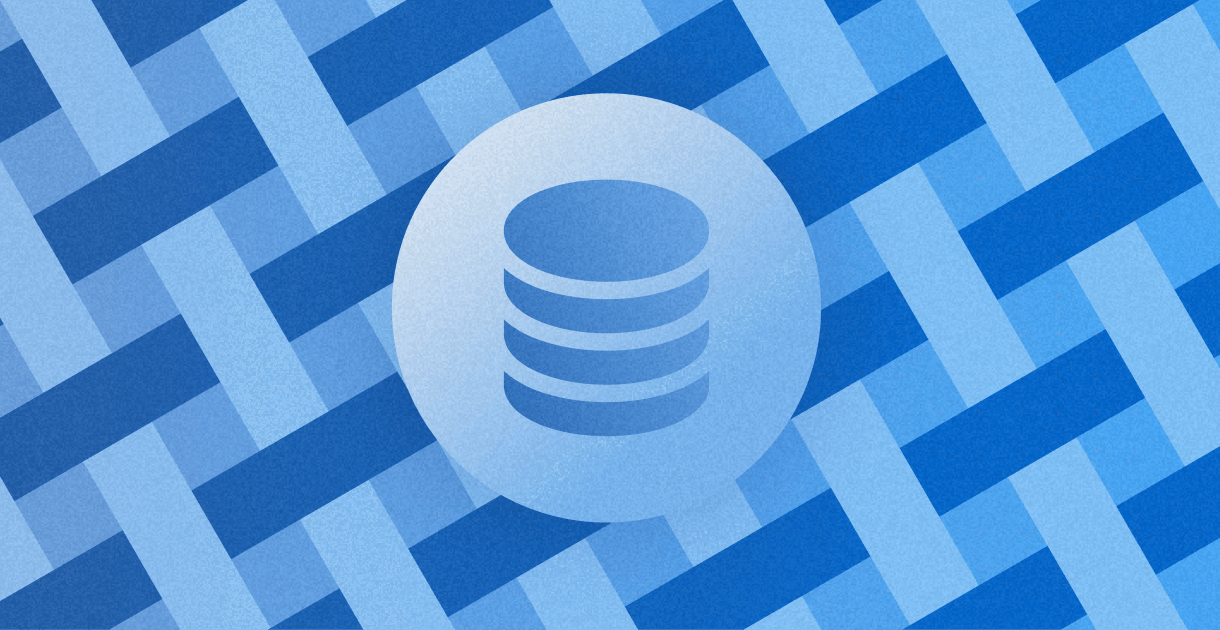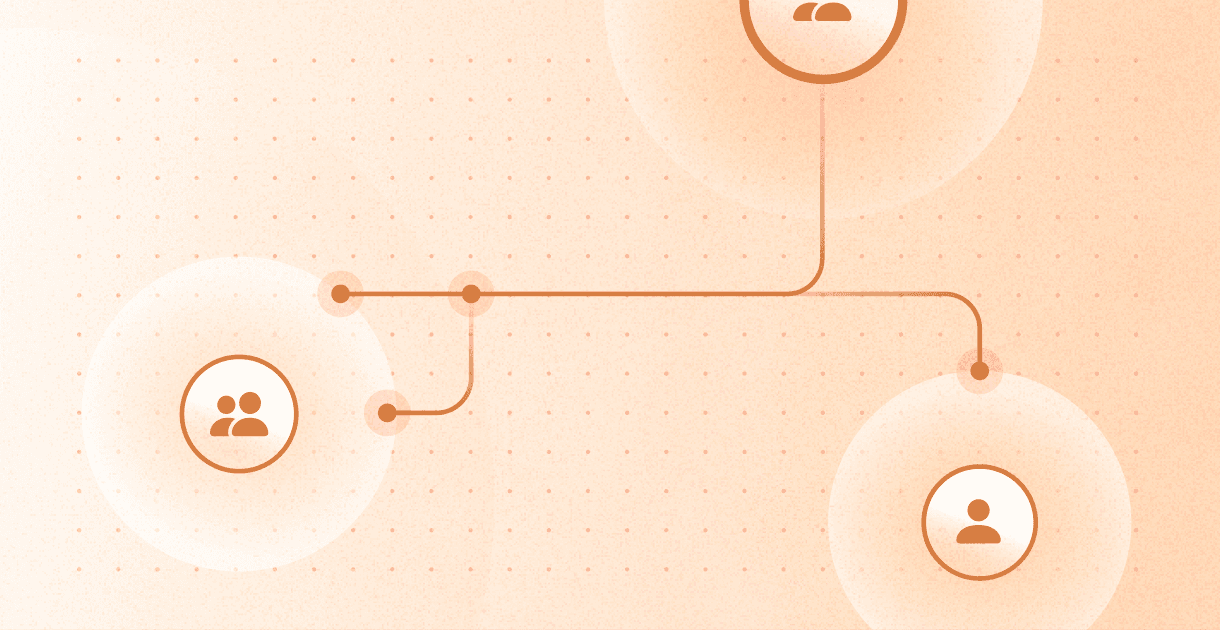What is a Data Fabric? Making Sense of the Trend

How data quality tools fit into this novel data management architecture.
In the ever-evolving landscape of data management, there’s an industry-wide trend to embrace a new type of data product, known as a data fabric. But what exactly is a data fabric? How does it compare to other data architectures like data mesh? What are its use cases and what benefits does it bring to the table? This article aims to shed light on the concept of data fabrics. As we delve into these topics, we’ll also explore how data quality tools fit into this novel data management architecture.
Data Fabric Definition
A data fabric is an architecture and set of data services that provide consistent capabilities across a spectrum of distributed data sources and formats. It enables frictionless access and sharing of data in a distributed data environment.
Data fabrics pave the way for businesses to handle large amounts of data, transforming it into a business-ready form. Through this, companies can extract more insightful information and enhance their competitiveness in the market.
Imagine a data fabric as a spider’s web, intricately woven and connecting multiple points. This technology links many data sources together through metadata. An intricate network cultivates relationships between data, fostering a user-friendly interface that covers the entire enterprise. The process is mostly autonomous, effortlessly carrying out its tasks without a great deal of human supervision.
Some Statistics and Predictions
By 2024, organizations that utilize active metadata to enrich and deliver a dynamic data fabric will reduce time to integrated data delivery by 50% and improve the productivity of data teams by 20%.
-Gartner
The global data fabric market size was evaluated at USD 2.1 billion in 2022 and is projected to hit around USD 8.9 billion by 2032, poised to grow at a CAGR of 15.54% during the forecast period 2023 to 2032.
-Precedence Research
70% of employees will be expected to use data heavily by 2025, up from 40% in 2018
-Salesforce
How a Data Fabric Works
A data fabric includes the functions found in other data management strategies, including data quality tools and a data catalog. The difference is a data fabric connects all the components and data through metadata and controls operations with artificial intelligence. A data fabric is a layer spanning all the organization’s data platforms, performing quality checks, mapping data, and performing continuous analysis. Data fabrics use AI to recognize patterns, make decisions, and build data flows.
The learning aspect of a data fabric makes it possible to apply its knowledge about how a company uses data to make processes more efficient. The system can even predict user requests or access data previously unknown to data analysts and make it available for evaluation.
The components of a data fabric all work together. Here is a brief description of the functionality of these elements.
A data catalog connects all data sources and captures the metadata from them. When companies add a new data source, the AI-driven data fabric uses information it has about existing data to extrapolate metadata for the new source.
The knowledge graph saves all the metadata and relationship information. This allows users and computers to discover new data relationships.
Activated metadata is new data saved to the knowledge graph after the data fabric has inferred information from analyzing the existing metadata.
A recommendation engine uses metadata to suggest data transformations or optimize scheduling. It can also perform data classification or apply data quality rules. Recommendation engines will also notice data anomalies and issue alerts.
Data delivery and preparation is made possible by the data fabric’s understanding of data structures and probable user intent. This allows the system to prepare data on its own or make suggestions to users. The data fabric can autonomously issue requests and receive data via APIs.
Data delivery optimization is achieved when data fabrics choose the fastest way to deliver data.
Data Fabric vs Data Mesh
While both terms describe mechanisms to manage data across an enterprise, a data fabric and a data mesh are not the same. They are different approaches to enterprise data management. So, how do they differ?
At its core, a data fabric is an integrated layer of data and connecting services that provides consistent, secure, and efficient access to data across a diverse range of sources. It involves a comprehensive suite of data services and capabilities, such as data discovery, integration, and governance, all delivered in a unified, seamless manner. Data fabric’s primary focus is on leveraging the power of AI to deliver a cohesive and unified view of data across the enterprise.
A data mesh is a decentralized approach to data architecture and organizational design. It treats data as a product and assigns product owners to different domains of data within the organization. Data mesh’s primary focus is on empowering domain teams to deliver, own, and operate their own data products, promoting greater agility and responsiveness to business needs.
Data Fabric Use Cases
Data fabrics have been useful to organizations for developing comprehensive customer profiles, finding and fighting fraud, and analyzing preventative maintenance schedules.
Here are some other uses for data fabrics:
Enterprise-Wide Data Integration: Data fabric can seamlessly integrate data from diverse sources, providing a unified view of the data landscape across the enterprise.
Data Governance: With its in-built capabilities, data fabric can enhance data governance, ensuring data quality, compliance, and security.
Real-Time Data Analytics: Data fabric enables constant access to data, facilitating real-time analytics and decision-making.
Data Monetization: By providing a unified view of data, data fabric can uncover hidden insights and opportunities, facilitating data monetization.
Data Fabric Benefits
Companies can deploy data fabrics in multiple scenarios, each offering unique benefits. From improving data accessibility to ensuring data consistency, the benefits of data fabric are many. Data quality tools can seamlessly integrate into a data fabric architecture, enhancing its effectiveness.
Data fabrics aid businesses in data discovery, allowing them to take on a variety of projects. A data fabric distinguishes itself by scope and scale as it eliminates data silos. Data integration across various sources allows companies to create a holistic view of their customers.
Besides improving productivity, data fabrics have demonstrated other benefits that can increase business value for those who have implemented this revolutionary data management method:
Innovative Integration: Data fabrics use knowledge graphs, metadata management, and machine learning to unify data across various data types and sources. Data management teams can group related datasets together and integrate new data sources into a business’s data systems. This functionality helps eliminate data silos.
Data Access Expansion: Data fabric architectures expand the access of data beyond technical resources to include business-line individuals. Business users can make faster decisions and technical resources are free to work on more technical projects.
Data Security: Organizations can erect data governance guardrails, ensuring the data fabric limits data access to employees in approved roles. Security teams can implement data masking and encryption as measures to deflect breaches and leaks.
Data Fabrics and Data Quality
Data quality will be part of a data fabric. Embedded data quality tools will ensure that data delivered via the data fabric will be valid and fit for the purpose the user specifies. Metadata is used to apply data quality rules. AI will notice if data changes and enable data quality measures to confirm or clean the new data elements. It is unnecessary to configure data quality rules for every data source. The data fabric takes care of applying the rules regardless of where the data originates.
A data fabric can seamlessly automate data profiling, discovery, and classification. The system can detect anomalies, monitor data quality, cleanse and standardize data, enrich it, and consolidate master data.
Autonomous data profiling enabled by a data fabric can even be helpful in crafting new data quality rules that apply more appropriately to all enterprise data. This contribution enriches the knowledge graph with added inferred information.
When a user requests customer data, a data fabric will evaluate overall data quality, recognize data relationships, establish business definitions for data terms, and certify golden records.
Key Takeaways
A data fabric is a revolutionary concept that offers a comprehensive solution to the complexity of data management in today’s data-intensive business environment. It is a holistic and integrated approach to managing data across disparate sources, ensuring that data is accurate, relevant, and easily accessible for informed decision-making.
Data fabrics evaluate overall data quality, providing assurance that the information is correct and reliable.
Data fabrics recognize and understand data relationships, making it easier to see how different data points connect and interact.
Data fabrics establish business definitions for data terms, adding clarity and consistency to data interpretation.
Data fabrics certify golden records, ensuring companies use the most accurate and complete version of data records for business operations.
As we’ve seen, the difference between a data fabric and a data mesh is a matter of focus. While a data mesh decentralizes data ownership and management, a data fabric provides a unified and integrated approach to managing data across the enterprise.
The benefits of a data fabric are clear–improved data quality, increased efficiency, and enhanced decision-making capabilities. However, successfully implementing a data fabric requires careful planning, the right tools, and a clear understanding of the organization’s data requirements and goals.
We recommend that IT professionals and business leaders become acquainted with the benefits a data fabric might offer their organizations.
 Firstlogic Team
Firstlogic Team
